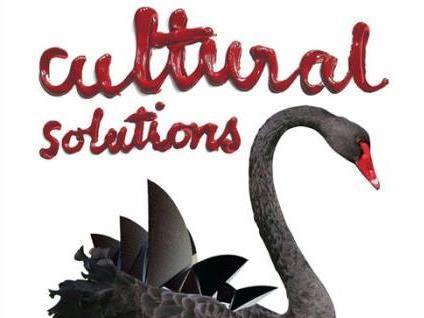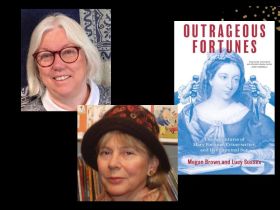It is not unusual for literary journals to question how arts, creativity and culture can reshape public policy and serve as solutions to social problems. Critical media functions as a conduit through which meaningful discussions on identity, relationships and public participation are had.
In its latest edition ‘Cultural Solutions’, Griffith Review tackles the question of the relationship between art and public policy through the prism of culture, and details many instances where the exercise of ‘disciplined, empathetic and engaged creativity and connection’ – as editor Julianne Schultz says – provides solutions to social ills.
The word ‘solution’ in itself can be a dirty word, as Scott Rankin – creative director of social change company Big hART – points out: ‘Roll the title “Cultural Solutions” around in your mouth and it can reek of finality, of a dying pillow, of brutal change-ism.’ Looking back to the Final Solution – Nazi Germany’s plan to systemically exterminate Jewish people – and even to the more recent Pacific Solution and PNG solution – ineffectual and inhumane policies that serve to deter asylum seekers – the word ‘solution’ has taken on a meaning that is incompatible with the purposes of this anthology.
Whichever way you term it however, creative remedies to otherwise intractable problems emerge in many a heartening account throughout the journal. In a compelling memoir ‘Not For Me’, Alysha Herrmann recounts how theatre provided a safe space for her to ‘see herself through new eyes’ as she escaped an abusive relationship and struggled with young motherhood. Although the Griffith Review may veer towards showcasing writing of cultural movers and shakers, Herrmann’s raw and personal account of the healing process she underwent by participating in the arts is proof that the journal is far from elitist.
The non-fiction pieces prove to be the most arresting sections of the journal, and Marcus Westbury’s ‘Resurrection Myths’ is a case in point. Westbury’s visceral description of his fractured upbringing and his subsequent recovery as he inadvertently finds himself in a ‘world of ideas’ is delivered with such panache the images he conjure linger long afterwards. In a different vein, Alice Pung writes with the quiet assurance and spellbinding quality that she is known for in ‘Cultivating Creativity in Children’ as she takes a mirror to her upbringing in Braybrook.
Carrying on with the beneficial nature of cultural investments, Leigh Tabrett describes the awe-inspiring experience of partaking in the Queensland Music Festival in ‘Soul of an Open Country’ – a beautiful piece of writing with evocative prose and lyrical descriptions. Similarly, Rebecca Lister’s ‘Thank You For Listening’ treads difficult ground as Lister helps people manoeuvre through their pain of losing a loved one to suicide by creating a commemorative anthology.
Indigenous dispossession emerges as a common theme throughout the journal. The accounts are hopeful however, as creative approaches, collaborative arts-based initiatives and compassion trump heavy-handed top-down measures in removing the social and economic barriers that indigenous people across the country face.
In ‘The Way Things Work Around Here,’ Cathy Hunt tells of how the creation of a cultural centre revitalises Katharine, a town that has seen the ‘history of the relationship between Aboriginal and settler Australia’ play out in its backyard. ‘From Karaoke to Noongaroke’ is a particular highlight and a tearjerker as it illuminates how the Noongar people of Western Australia have appropriated Japanese karaoke to alleviate the pain of disenfranchisement and a crisis of deaths in the 1990s right through to the 2000s.
Looking abroad, ‘Dad’s Funeral’ by Frances Guo is a heartfelt homage to a man who sacrificed his life for the state during the days of Mao Zedong, while both Robyn Archer and Luke Slattery turn to Europe where creative economy is placed on a pedestal.
Raphaela Rosella’s powerful photo essay presents a searing social commentary on society’s perception of young pregnant women, and adds variety to the text-based contributions of the journal. Susan Varga’s playful and light ‘Sydney’ is a particular highlight among the poems, while standouts in the fiction section include the last piece ‘The History Lesson’ by Chris Armstrong, which examines the preferential treatment given to white Australians’ retelling of historical narratives.
The words of filmmaker, director and community worker Phillip Crawford, memorialised in essay, ‘Finding Hope in the Spotlight’, perfectly encapsulates the power of cultural solutions. When asked about why he collaborates with disadvantaged communities on arts projects, Crawford says: ‘I think it’s a right that people can get to do something in their lives they feel proud of.’
Rating: 4 stars out of 5
Griffith Review #44: Cultural Solutions
Edited by Julianne Schultz
Paperback
288pp
RRP $27.99
ISBN: 9781922182258
Text Publishing





